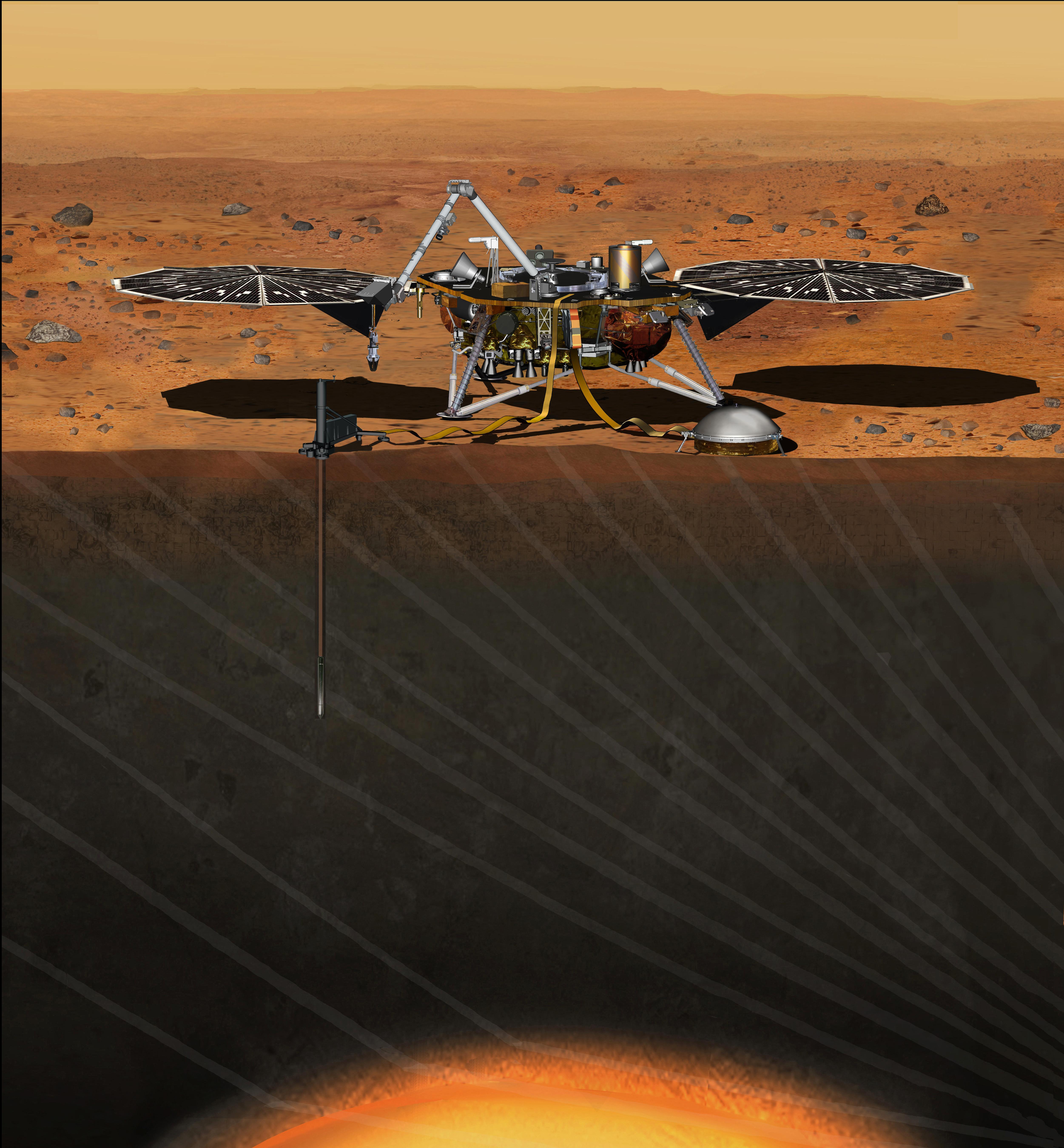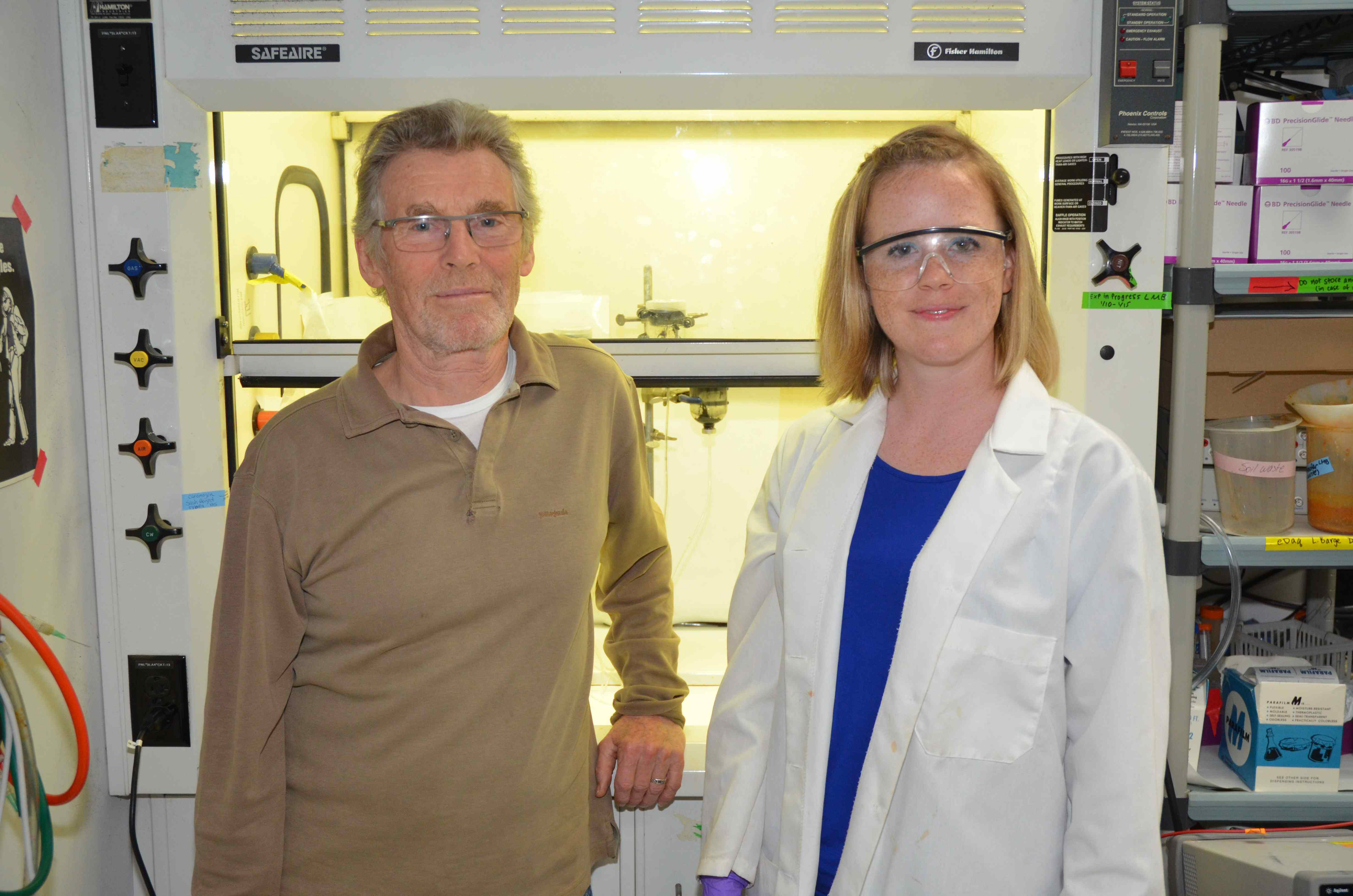Could 'Green Rust' Be A Catalyst For Martian Life?

Mars is a large enough planet that astrobiologists looking for life need to narrow the parameters of the search to those environments most conducive to habitability.
NASA's Mars Curiosity mission is exploring such a spot right now at its landing site around Gale Crater, where the rover has found extensive evidence of past water and is gathering information on methane in the atmosphere, a possible signature of microbial activity.
But where would life most likely gain energy from its surroundings? One possibility is in an environment that includes “green rust,” a partially oxidized iron mineral. A fully oxidized iron “rust” — one exposed to oxidation for long enough — turns orangey-red, similar to the color of Mars' regolith. When oxidization is incomplete, however, the iron rust is greenish. [Present Life On Mars Not Ruled Out]
This means that there are two different “redox states,” or types of iron with different numbers of electrons in the same mineral. This difference between the two iron redox states could allow the mineral to take in or give up electrons and thus act as a catalyst, said Laurie Barge, a planetary scientist at NASA's Jet Propulsion Laboratory. She studies hydrothermal vents, an area where chemical contrasts also fuel life.
“From an environmental science perspective, green rust can absorb and concentrate nutrients, and can also accept and donate electrons for life,” said Barge.
She is the lead author of related work that was presented at the American Geophysical Union's Joint Assembly meeting in May 2015. Funding for this work comes from the Jet Propulsion Laboratory’s Icy Worlds team as part of the NASA Astrobiology Institute (NAI) element of the Astrobiology Program at NASA.
Digging deep
One major challenge in the search for life on Mars is that its surface is highly oxidized. On Earth, green rust generated in Barge’s lab oxidizes quickly when exposed to air, and its composition is changed in only an hour. However, the lack of oxygen on Mars makes this a slower process. It is likely that green rust occurs beneath the oxidized surface, perhaps only a centimeter or half-inch deep as revealed by Curiosity.
Breaking space news, the latest updates on rocket launches, skywatching events and more!
There are more probes on the way to Mars that will include drills. One of those will be NASA's InSight lander, which is set to go to the Red Planet in 2016. Another is the European Space Agency's ExoMars rover, expected to launch in 2018.
A major focus of current NASA missions on Mars is finding out where water has flowed in the past. NASA's Curiosity, Opportunity and Spirit rovers have all found rocks that form in the presence of water, such as the red iron oxide mineral hematite, as well as select sulfates and clays. Further, several orbiting spacecraft have seen signs, such as the presence of gullies, in which water is thought to have once flowed on the surface.
Barge knows from her experiments that green rust forms when two contrasting solutions – one containing iron and one containing hydroxide – are mixed. On Earth, green rust has been found in such environments as non-oxygenated wet sediments and steel pipes that corrode in sea water.
Probing by laser
To detect green rust, Barge suggests using laser Raman spectroscopy, a technique which will be included on ESA’s ExoMars and NASA’s Mars 2020 missions. The technique involves directing a laser beam at a sample and then collecting and analyzing the light that is scattered from the spot to identify its molecular composition and structure. The scattered light contains fingerprint spectral features that allow us to determine the molecular makeup and mineralogy of the sample. Barge has teamed up with Pablo Sobron, a research scientist at the SETI Institute, an expert in laser-based spectroscopy applied to Mars exploration, to adapt the Raman technique for the detection and analysis of green rust.
But first, there needs to be a better understanding of where green rust will occur and how it can support habitability. The JPL Icy Worlds team (led by the Jet Propulsion Laboratory’s Isik Kanik) recently received a second five-year NASA Astrobiology Institute grant to study the habitability of icy worlds, including an investigation into how green rust might drive prebiotic chemistry, or chemistry that is a precursor to life.
“There's a theory proposed by Michael Russell at JPL that green rust could have acted as a proto-enzyme to convert energy currencies on early Earth,” Barge said, referring to how lifeforms convert proton and electron gradients into chemical energy to drive metabolism and, thereby, life.
Green rust is especially interesting in this regard because it is a double layered hydroxide that can sandwich all sorts of interesting components relevant to life in between these layers, Barge added. These include phosphates, DNA, amino acids and proteins.

Elizabeth Howell (she/her), Ph.D., was a staff writer in the spaceflight channel between 2022 and 2024 specializing in Canadian space news. She was contributing writer for Space.com for 10 years from 2012 to 2024. Elizabeth's reporting includes multiple exclusives with the White House, leading world coverage about a lost-and-found space tomato on the International Space Station, witnessing five human spaceflight launches on two continents, flying parabolic, working inside a spacesuit, and participating in a simulated Mars mission. Her latest book, "Why Am I Taller?" (ECW Press, 2022) is co-written with astronaut Dave Williams.



